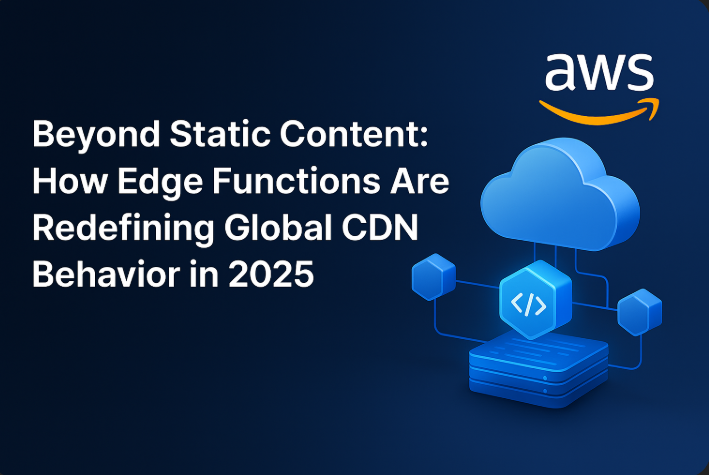
ntroduction: The End of CDN as We Knew It
For years, CDNs (Content Delivery Networks) were built around one core promise: faster delivery of static content. HTML files, images, CSS, JS bundles — if it could be cached, it could be accelerated. But the needs of modern web applications have outgrown this model. SaaS platforms, dynamic eCommerce experiences, personalized portals, and multi-device access all demand more than simple caching.
Enter edge functions — lightweight, event-driven scripts running at the CDN's edge nodes. These serverless programs allow developers to intercept, inspect, modify, or redirect requests and responses in real time — not at the origin, but directly at the point of user entry.
In 2025, CDNs are no longer just static delivery engines; they are programmable, decentralized application layers.
What Are Edge Functions, Really?
Edge functions are short-lived pieces of code (typically written in JavaScript, TypeScript, or WebAssembly) deployed to CDN edge locations. Unlike origin server logic, edge functions are designed to:
Execute with millisecond latency near the user
Run per request, including for dynamic or non-cacheable assets
Scale automatically without infrastructure provisioning
They are event-based, often bound to lifecycle stages like:
onRequest: Before the request is forwardedonResponse: After the origin has respondedonError: When an error is encountered
This model is embraced by modern CDNs like CloudFlew to create programmable request pipelines.
Use Cases That Go Beyond Caching
Real-Time Redirects and URL Rewrites
Modify or reroute requests based on geolocation, device type, language headers, or cookies — all before they ever hit your application server.
Edge Authentication and Access Control
Block unauthorized access or perform JWT token checks at the edge. Reduce attack surface and prevent wasted origin compute.
Personalized Content by Region or User Type
Inject user-based headers or A/B test variants at the edge, enabling localized experiences without origin logic.
API Routing and Sanitization
For multi-tenant APIs or SaaS platforms, route requests to different origin pools or scrub sensitive headers — dynamically and securely.
Compliance-Driven Data Segmentation
Control where user data flows based on GDPR, PDPA, or SOC2 policies. Edge logic allows conditional routing or request blocking.
Why It Matters: Business Benefits in 2025
| Impact Area | Value Delivered |
|---|---|
| Global Speed | Sub-50ms latency on routing and logic execution |
| Security | Edge-level request rejection reduces threats |
| Cost Savings | Offloads logic from origin infrastructure |
| Conversion | Faster, personalized responses boost UX |
| Flexibility | Rules update in seconds without deploy cycles |
For SaaS providers, streaming platforms, global eCommerce, and fintech applications, edge logic is no longer optional — it’s part of how your product scales and secures.
How CloudFlew Is Leading This Edge Evolution
CloudFlew’s edge functions framework includes:
Lifecycle-based logic hooks (onRequest, onOriginRequest, onOriginResponse, etc.)
Multi-language support including JS and Wasm
Inline testing, logging, and rollback tools
Template libraries for common use cases (redirects, geo-filtering, API token validation)
Region-specific overrides for compliance-driven deployments
Combined with its global edge network and dynamic CDN routing, CloudFlew enables developers to ship changes faster, iterate logic globally, and reduce backend dependencies.
Looking Ahead: Edge as the Application Layer
The shift from caching to computation at the edge marks the most significant transformation in CDN technology since its invention. In 2025 and beyond, we expect to see:
AI-powered edge logic for bot detection, user segmentation
Multi-step pipelines combining validation, rewrite, enrichment
Developer-first tooling for real-time debugging and CI/CD
For modern teams, building logic at the edge is not just a performance optimization — it's a new paradigm for secure, scalable, personalized applications.

